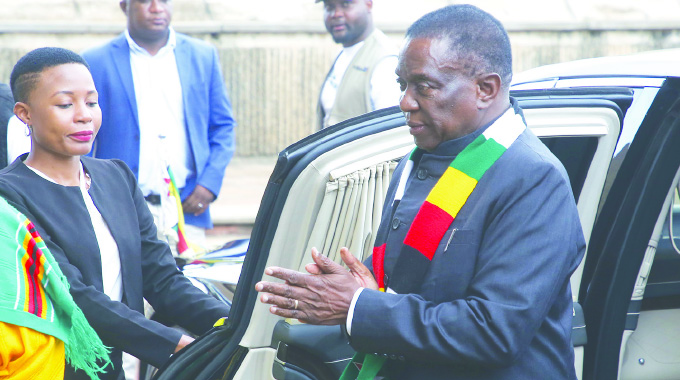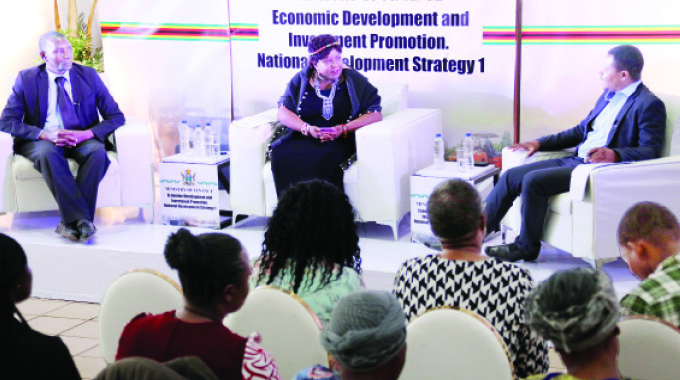Hwange Unit 7 passes all tests

Nqobile Bhebhe, [email protected]
THE 300-megawatt Hwange Power Station Unit 7 has officially passed all tests in another milestone for Zimbabwe after it was officially put into commercial operation at midnight yesterday.
The station has obtained the critical Commercial Operation Date (COD) certificate, which certified the unit as successfully completed all tests, coming a few days before President Mnangagwa officially commissions the project.

President Mnangagwa
“Unit 7 of the Hwange Power Station Expansion Project has obtained the COD (Commercial Operation Date) certificate, which certifies that unit 7 was officially put into commercial operation at 0:00 on July 27,” said Power China, the contracting company, which synchronised the Hwange Thermal Power Station.
Unit 7 is the first phase of the US$1,5 billion Hwange Thermal Power Station expansion and incorporates Unit 8 as phase two.
COD is generally defined as the day that the system becomes fully operational and can begin selling power under the terms of the power purchase agreement.
The two new units are expected to produce a combined 600 megawatts, a major milestone for the Second Republic’s signature projects aimed at boosting power generation.
The project has already generated immense economic and social spin-offs amid reports that 50 000 people and international entities have directly benefited from the massive investment through employment and provision of various supplies.
The project has proved to be a critical economic enabler beyond just increasing power generation as it has boosted several ancillary projects that feed into the ongoing construction works.
Since the end of March, Zimbabwe has been enjoying increased power generation following the successful synchronisation of Hwange Unit 7.

Hwange Power Station
The continued improvement in power generation is helping Zimbabwe reduce electricity imports and ease power cuts. This is driving increased industrial production as there is now guaranteed electricity supply, a key economic enabler and driver towards the realisation of Vision 2030.
The country’s economy is on a rebound due to various policies initiated by the Government that have seen growth in the mining and agricultural sectors.
Resultantly, the country’s industrial sector is thriving with capacity utilisation standing at over 70 percent, while successes in the agriculture sector have seen the country achieving food security with a surplus for export.
Increased power generation has helped the country power old mines that have been revived under the Second Republic, establishment of new mines and expansion of existing ones such as Bikita Lithium, Unki, Murowa Diamonds, and others.
Several other power generation projects are at various stages of implementation.
A steadily growing population, rapid rural-to-urban migration, and nascent economic recovery — driven by new mining projects — have spurred demand for power in the country.

Bikita Minerals Lithium mine
With demand sitting at about 1 850MW, Zimbabwe is working on further beefing up its energy generation capacity to meet the National Development Strategy (NDS) requirement of about 3 467MW by 2025.
To achieve Zimbabwe’s aspirations of the 2030 national vision, a total of 11 000MW would be required.
To that end, major refurbishment on Unit 5 at the Hwange Thermal Power Station has since commenced under a multi-million-dollar rehabilitation project set to extend its lifespan by up to 25 years.
The unit has an installed capacity to generate 220 megawatts (MW).
The process, which started immediately after the successful synchronisation of two new 600MW generation units — Hwange 7 and 8 — recently, is expected to be complete next year.
After the rehabilitation of the six units, Hwange will be able to produce a maximum of 1 520MW with 920MW from units 1 to 6 and 600MW from Unit 7 and 8. The expansion project started in August 2018 following a ground-breaking ceremony by President Mnangagwa.
However, it was affected by a number of unforeseen events such as the Covid-19 outbreak.
When fully commissioned, the project will help Zimbabwe tame electricity imports and ease power cuts, which will drive increased industrial production with guaranteed electricity, a key economic enabler and driver towards realisation of national goals in line with Vision 2030.











Comments